 Offset print quality inspection apparatus
Lab-vision®
Offset print quality inspection apparatus
Lab-vision®
Lab-vision Development concept
- Profitable In-Line Quality inspection system Lab-vision®
- When considering the facilities of inspection equipment for inline quality inspection of sheet-fed printing machines, printing companies are expected to introduce the equipment to provide quality assurance to their customers first. We have developed Lab-vision® because we believe that the equipment should be an equipment to improve the profitability of printing companies as well as quality assurance for customers who have introduced the equipment.
- Lab-vision is a high-end, in-line quality inspection system device dedicated to sheet-fed
offset printing presses that seeks to be beneficial to customers without compromising any of
the three aspects of function, quality, and design.
Based on this concept, we will propose specifications suitable for printed products, objectives, and equipment from the stage of examining the quality inspection equipment to the stage where they can be operated effectively after introduction. - We believe that the importance of Lab-vision is to enable printing companies to further compete and develop through our testing technologies without compromising the pursuit of high-quality products that have been achieved through the accumulation of long-standing efforts.
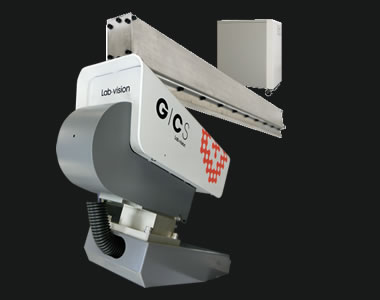
Lab-vision configuration
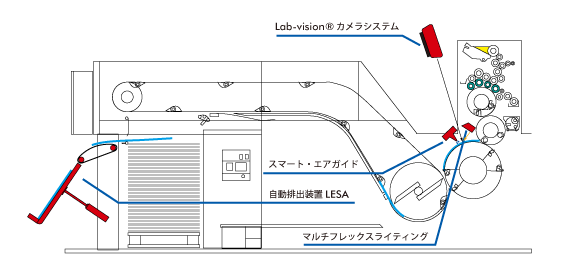
- Lab-vision hardware
- Smart Air Guide for Paper Holding Equipment with Maximum Stability and
Impact on Printing
- Despite the various quality inspection equipment manufacturers' initiatives, the equipment used to stabilize sheets in in-line inspection equipment was not critical. It was stable on cardboard but not on thin paper. Air blown in large quantities in exchange for stability also affected printing by drying of the plate or increasing the temperature of the plate.
The Lab-vision Smart Air Guide, a completely contactless paper hold-down system, provides sheet stabilization while eliminating the disadvantages of conventional paper stabilization systems.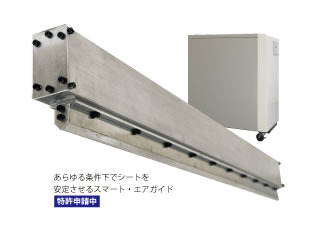
- Feature
- 1. It is completely contactless and does not affect printed matter.
- 2. Electricity consumption (electricity cost) is extremely small.
- 3. There is no increase in plate temperature.
- 4. There is no drying of the plate.
- 5. The adjustment is unnecessary for cardboard and thin paper.
- Tri-Prism3CCD cameras and lenses that do not overlook slight changes in hue
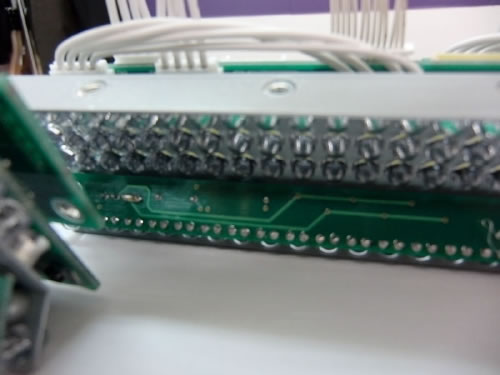
- This lighting device may be overspec if the quality inspection device only inspects printing defects such as 3dripping , dirt, and dirty fillets.
But if you don't need to monitor the tiny hikes and soils that occur continuously but in large quantities, the doublets that can diagnose the condition of the machine, or the hue.- Multiflex lighting was designed not only to accommodate all surfaces, including deposits, but also to catch changes in color density due to changes in ink film pressure.
This high-end lighting system will certainly make Lab-vision® a reliable assistant for operators.- Multi-Flex Lighting System for High-End Lighting that enables monitoring of hue as well as defects such as 3-tare, dirt, dirt, and hick
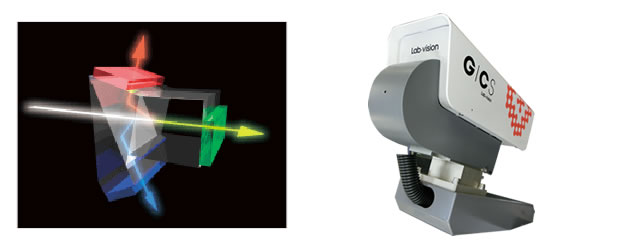
- The third possible requirement for operators to monitor hues and tones is that Lab-vision® is beyond the ability of print faults detectors, Tri-Prism-3CCD in cameras and lenses.
The combination of a Tri-Prism camera with the widest range of all cameras, which is very close to the color range of the human eye, and lenses specially designed for color inspection, will certainly satisfy your quality assurance as an inspection device beyond the inspection device. - Despite the various quality inspection equipment manufacturers' initiatives, the equipment used to stabilize sheets in in-line inspection equipment was not critical. It was stable on cardboard but not on thin paper. Air blown in large quantities in exchange for stability also affected printing by drying of the plate or increasing the temperature of the plate.
- Lab-vision software
- Image processing algorithm group, which supports the production technology
of printing companies
- It goes without saying that image processing technology is at the heart of an inspection device as long as the printing quality inspection device uses a camera to image it, but our "image processing technology" here refers to a more flexible technology that can evolve day by day and change under new demands in order to achieve the purpose of the customer's introduction of the inspection device.
In the case of printing, there are a variety of printed materials, and the emphasis placed on clients is that the "image processing" required for the inspection equipment differs depending on the background of the times and the conditions including the materials used, and continues to change.
We believe that image processing of quality inspection equipment is part of "production technology," so we design it as a system of production technology that not only finds foreign matter and dirt, but also increases efficiency, lowers loss rate, and increases profits. Image processing including programming to realize this is called "image processing technology." - It goes without saying that image processing technology is at the heart of an inspection device as long as the printing quality inspection device uses a camera to image it, but our "image processing technology" here refers to a more flexible technology that can evolve day by day and change under new demands in order to achieve the purpose of the customer's introduction of the inspection device.
1) Patterns match
Pattern matching is a synonym for quality-testing algorithms, but the Lab-vision pattern-matching
method is based on the belief that testing equipment is part of the manufacturing technique.
Therefore, the method of matching the reference image with the image to be tested is not used.
In the case of an inspection device that says "Differences between reference images and images under
inspection" = "All defects", printed books that have been shipped to customers are also defective
because they are "Differences from reference images".
Lab-vision programs test equipment with "pattern matching" algorithms that incorporate data to
determine whether the print should be defective or non-defective.
2) Detection of broken letter
Depending on the type of printed matter, "fogging" may be more important than pinholes or color
changes.
Lab-vision provides a separate frame of programming to detect "fog" because it requires a different
approach than conventional pattern matching.
In addition, since the accuracy of broken letter required by printing companies differs depending on
the printed matter, when introducing a quality inspection system, the specification of the
inspection system, including image processing, is selected after thoroughly discussing what kind of
defect is important (for customers).
3) Defect assessment
- [We would like to ship paper contaminants contained in recycled paper as non-defective products."]
- [The open pinhole in the image area is a problem, but if the defect in the non-image area has only one sheet even if the size is the same, it does not become a problem.]
- [The open pinhole in the image area is a problem, but if the defect in the non-image area has only one sheet even if the size is the same, it does not become a problem.]
- [Color is not a problem, but letter skewing or omission is a big problem.]
- [Differences in tones are the most problematic]
There are various standards for shipping to customers.
We are addressing this issue and designing an algorithm for defect determination.
4) Monitoring of hue and density
As a distinction between quality and quality, "color homogeneity" is supported by advanced technology
in offset-printing, and I believe that it is a core technology that brings out the taste of printing
companies. In Lab-vision, we have prepared algorithms that enable us not only to detect defects but
also to monitor hue and density.
Of course, this is a technique that consists of optical system hardware with high-performance
Lab-vision. However, we have constructed hue monitoring algorithms that take into account data from
different perspectives, ink density and dot gain in the case of processes, and the relationship
between ink film thickness and hue in the case of solid parts, which should be monitored by printing
companies in the color control of offset printing.

-
Information on business and recruitment is provided.


-
Explain GICS products





